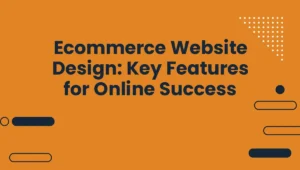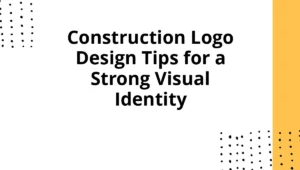In a world where visual impressions speak louder than words, a logo serves as the face of your brand—a succinct embodiment of its essence, values, and aspirations. While design trends can be tempting to incorporate, not every fleeting fashion is suitable for a timeless brand identity. At Cham Agency, we understand that your logo is more than just an aesthetic choice; it’s a critical component of your brand’s long-term narrative. In this article, we’ll explore the logo design trends to avoid, ensuring your brand remains distinguished and memorable in a visually saturated marketplace. By focusing on what stands the test of time, we’ll help you create a logo that not only resonates today but also endures for years to come. Join us as we delve into the dos and don’ts of logo design,setting the stage for a lasting brand legacy.
Understanding the Pitfalls of Overused Logo Styles
In the fast-paced world of design, certain logo styles can become all too familiar, leading brands to blend into a sea of sameness. Overused elements often lack originality and fail to convey a unique brand identity. The trend of minimalistic logos, while initially refreshing, has been stretched to its limits, often resulting in indistinct designs that could belong to any number of companies. Consider the implications of using generic symbols or universal icons that have lost their meaning due to constant overutilization. These choices can dilute a brand’s message and hinder potential connections with the target audience.
Moreover, the reliance on popular color palettes and trends can further entrench a brand within the confines of the expected.Many designers fall into the trap of echoing current favorites without considering true brand alignment. A logo should reflect a brand’s values, mission, and vision, not merely be an echo of what is trending. Emphasizing unique design elements can set a brand apart and foster recognition. To illustrate this, here’s a comparison of effective versus overused styles:
| Effective Design | Overused Style |
|---|---|
| Custom typography that tells a story | Default Google fonts |
| Unique shapes and symbols | Playful circles and rounded corners |
| Thoughtfully chosen color schemes | Monochromatic gradients |
Breaking Free from Trend-Driven Color Choices
In the ever-changing world of design, it’s easy to get swept away by fleeting color trends that promise to make your brand look fresh and contemporary. However, such choices can often lead to a disconnect between your brand’s essence and its visual representation. By prioritizing trends over substance, you risk crafting a logo that may quickly feel outdated. Instead, focus on establishing a color palette that reflects your brand’s identity and values, ensuring longevity and relevance in your branding. A well-thought-out approach allows for adaptability as trends evolve without compromising your brand’s integrity.
When selecting colors for your logo, consider the psychology behind each hue and its cultural connotations.A few strategies to achieve enduring color choices include:
- Timeless Neutrals: Shades like black, white, and gray can provide a strong foundation for your brand, offering versatility across various applications.
- Brand Importance: Choose colors that resonate with your target audience and effectively communicate your brand’s message.
- Subtle Accent Colors: Integrate a limited palette of bold hues for accents that will stand out without dominating the overall design.
By prioritizing meaning and emotional connection over transient popularity, you can create a logo that not only stands the test of time but also fosters deeper relationships with your audience.
Navigating the Balance Between Minimalism and Complexity
In today’s fast-paced design landscape, striking a harmonious balance between simplicity and intricate details is essential for creating a logo that lasts. Minimalism celebrates clarity and conciseness, offering immediate recognition—qualities that help brands etch themselves into consumers’ minds. However, a logo that is *excessively stripped down* can easily become forgettable, losing the unique essence of the brand. To avoid this pitfall, it’s vital to incorporate just enough complexity that reflects the brand’s ethos without overwhelming the viewer.
Here are some thoughtful strategies to achieve that equilibrium:
- Focus on Core Values: Identify the essence of your brand and let that guide your design choices.
- Introduce Unique Elements: Subtly blend unique shapes or textures that add depth while maintaining an overall streamlined appearance.
- Limit Color Palette: Use a few colors thoughtfully to enhance visual interest without creating chaos.
- Embrace Negative Space: Utilize negative space creatively to add a layer of complexity that encourages viewer engagement.
Emphasizing Consistency Over Fleeting Trends
In the rapidly evolving world of design,it can be tempting to chase the latest fads that flash across the digital landscape. Though,the essence of a lasting brand identity resides in the ability to foster consistency through timeless principles rather than succumbing to transient trends. When establishing a logo, it’s crucial to select elements that reflect the core values and mission of your brand, ensuring they resonate with your audience well beyond the current moment. By prioritizing simplicity, clarity, and versatility, brands can create a visual identity that not only stands the test of time but also builds lasting connections with consumers.
For a logo to achieve this enduring appeal, consider the following aspects: color palettes that evoke emotion, font choices that convey personality, and iconography that tells a story. Each decision should be made with an eye toward sustainability, not just in design aesthetics but also in the message it communicates. the goal is to create an image that remains relevant and recognizable, even as trends shift. After all, a logo is not just a graphic; it is the cornerstone of your brand’s identity, meant to spark recognition and loyalty over time.
Final Thoughts
In the ever-evolving landscape of branding, it’s easy to feel the pressure to adopt the latest design fads.Though, as we’ve explored, not all trends deserve a place in your logo’s legacy. By understanding what to avoid,you empower your brand to transcend fleeting styles and resonate with your audience for years to come.
Opting for clarity over clutter,and authenticity over imitation,allows your logo to stand the test of time,embodying the essence of your brand with resilience and elegance. As you embark on your logo design journey, remember that a truly effective identity is not just about what’s popular, but what reflects your brand’s unique story and values. Embrace the wisdom of timeless design principles,and watch your brand flourish amidst the changing tides of visual culture. After all, a great logo isn’t just seen; it’s felt, remembered, and ultimately becomes a lasting part of your brand’s narrative.








